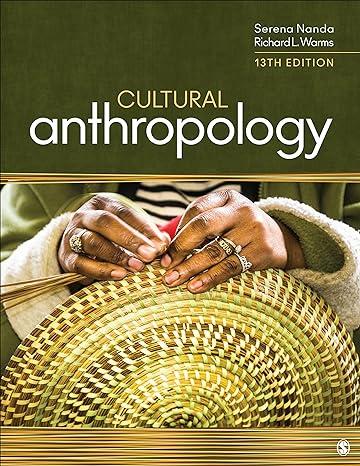The United States is one of the world's most religious, wealthy nations. When the French traveler and
Question:
The United States is one of the world's most religious, wealthy nations. When the French traveler and political philosopher Alexis de Tocqueville visited America in 1831, the religiosity of Americans was the first thing that struck his attention (1956/1835-1840, p. 319). Additionally, the United States has a long history of religious diversity. In that same era, the French diplomat Talleyrand is reported to have complained that the United States had 32 religions but only one sauce (T. Smith, 2002).
Today, the United States is still a very religious nation; about \(90 \%\) of Americans say they believe in God, though this may overstate the true number (Cox, 2018b). However, Americans appear to be becoming less religious and less likely to identify with any particular religion. Polls have closely tracked religion in the United States for many years. In 1948, 91\% of Americans identified as Christians, and \(2 \%\) said they had no religious identification. By 2007, only \(78 \%\) identified as Christian, and by 2021, that number had dropped still further to \(63 \%\). At the same time, the number with no religious affiliation has risen dramatically, to \(16 \%\) in 2007 and almost 30\% in 2021 (Smith, 2021; Newport, 2009). In 2021, only about \(22 \%\) of Americans said they attended a religious service weekly, down from more than one in three a quarter century earlier, while more than \(30 \%\) say they never attend (Gallup, 2018; Statistica, 2022; Duffin, 2022). Membership in churches, synagogues, and mosques has fallen from a post-World War II high of \(76 \%\) in 1945 to a low of \(47 \%\) in 2021 (Jones, 2021). The decline is particularly drastic among young people.
At the same time, U.S. religious diversity is increasing. There have been Muslim, Hindu, and Buddhist communities in the United States since the 19th century-and, in some cases, earlier-but these groups have grown enormously over the past several decades. In A New Religious America (2001), Diana Eck of Harvard University's Pluralism Project reported that the changes in U.S. immigration policies that have drawn new immigrants from India, Pakistan, China, Korea, Vietnam, and elsewhere have resulted in large increases in minority religions. These religions have drawn new American converts as well.
In the 1970s, members of non-Judeo-Christian religions accounted for less than \(1 \%\) of the U.S. population. By 2014, that number had grown to about \(4 \%\). Estimates of the membership of many religions are controversial, but in rough numbers, the Muslim population in the United States is almost 3 million, and there are about 2.3 million Buddhists and the same number of Hindus (Pew Research Center, 2016). Los Angeles, home to many Asian immigrants, is "the most complex Buddhist city on Earth" (Eck, 1993).
One result of the growth of these religions has been an explosion in the construction of places of worship. There are Buddhist and Hindu temples, mosques, and Islamic learning centers in most large U.S. cities. Although these religious institutions celebrate their respective traditions, they have in many cases become Americanized, offering classes, youth programs, and scout troops-programs similar to those often offered by churches and synagogues.
Questions
1. Do you believe the increasing diversity of religion in the United States will result in meaningful changes in U.S. politics?
2. In many countries, religious groups have fought each other. Thus far, this has not happened in the United States. Why do you think this is the case? Will there be religious violence in the American future?
3. How have religions in the United States influenced one another? Have you incorporated beliefs and practices from various religions into your own beliefs? Will you in the future?
Step by Step Answer:






